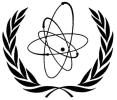Fusion is the process at the core of our Sun. What we see as light and feel as warmth is the result of a fusion reaction: Hydrogen nuclei collide, fuse into heavier Helium atoms and release tremendous amounts of energy in the process.
In the stars of our universe, gravitational forces have created the necessary conditions for fusion. Over billions of years, gravity gathered the Hydrogen clouds of the early Universe into massive stellar bodies. In the extreme density and temperature of their cores, fusion occurs.The main advantage of nuclear fusion over fission is that there virtually would not be any nuclear waste that is produced.
ITER (International Thermonuclear Experimental Reactor) is a large-scale scientific experiment that aims to demonstrate that it is possible to produce commercial energy from fusion.

The Q in the formula on the right symbolizes the ratio of fusion power to input power. Q ≥ 10 represents the scientific goal of the ITER project: to deliver ten times the power it consumes. From 50 MW of input power, the ITER machine is designed to produce 500 MW of fusion power—the first of all fusion experiments to produce net energy.
During its operational lifetime, ITER will test key technologies necessary for the next step: the demonstration fusion power plant that will prove that it is possible to capture fusion energy for commercial use.

A cut-away view of the ITER Tokamak, revealing the donut-shaped plasma inside of the vacuum vessel.
If you want to find out more information about ITER, please refer to the link below.
Reference:

